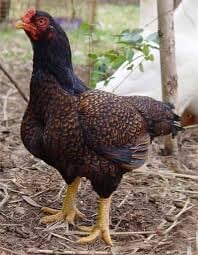EddieSalita
Songster
Hi,
I've got a broody hen. This is her second bout of broodiness. She is eleven months old hatchery hybrid hen. Amazing layer. White leghorn over rhode Island white.
3 months ago she went broody and we gave her a dozen eggs from a neighbour. The rooster was old the fertility of the eggs uncertain. There was a mishap and she spend 5-6 hrs off the nest on the 7th day. Regardless none of the eggs were viable. After 35 days of dedicated broodiness we took the eggs and a day or two later she broke her broodiness. Signs are she will be an excellent mother.
She has gone broody again and we have another dozen eggs from another neighbour. She has a magnificent rhode Island white trio and two cornish game hens in the same run. The eggs all look very similar.all white of similar size. Its a young flock, but she has raised chicks from it, but not since she had the cornish in there. So we expecting to get mostly fertile eggs this time.
My question is what to expect from a rhode Island white over a cornish game hen? Obviously the rhode Island white chicks will be white. But I'm thinking the cornish x will also be white and change colour as the feather out?
Will the cornish cross be viable laying birds to share with the neighbourhood?
I'm aware meat bird hatcheries closely guard their genetic recipe. But essentially I also realise I may be creating a very similar bird.
I'm near my limit for chickens at 15. I can't afford to keep another 5-10 with the space I have. So am looking for advice on what i might be able to do with the cornish crosses and if they will be easily identifiable.
Thanks for reading
I've got a broody hen. This is her second bout of broodiness. She is eleven months old hatchery hybrid hen. Amazing layer. White leghorn over rhode Island white.
3 months ago she went broody and we gave her a dozen eggs from a neighbour. The rooster was old the fertility of the eggs uncertain. There was a mishap and she spend 5-6 hrs off the nest on the 7th day. Regardless none of the eggs were viable. After 35 days of dedicated broodiness we took the eggs and a day or two later she broke her broodiness. Signs are she will be an excellent mother.
She has gone broody again and we have another dozen eggs from another neighbour. She has a magnificent rhode Island white trio and two cornish game hens in the same run. The eggs all look very similar.all white of similar size. Its a young flock, but she has raised chicks from it, but not since she had the cornish in there. So we expecting to get mostly fertile eggs this time.
My question is what to expect from a rhode Island white over a cornish game hen? Obviously the rhode Island white chicks will be white. But I'm thinking the cornish x will also be white and change colour as the feather out?
Will the cornish cross be viable laying birds to share with the neighbourhood?
I'm aware meat bird hatcheries closely guard their genetic recipe. But essentially I also realise I may be creating a very similar bird.
I'm near my limit for chickens at 15. I can't afford to keep another 5-10 with the space I have. So am looking for advice on what i might be able to do with the cornish crosses and if they will be easily identifiable.
Thanks for reading
Last edited:






